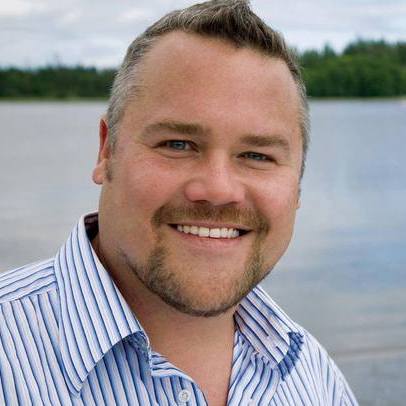Are Interest Rates Going Up and Down at the Same Time? COVID-19
Victor Anasimiv • April 7, 2020

If you’re paying more attention to the Canadian economy due to COVID-19, and it seems like you’re getting mixed messages; that mortgage interest rates are going both up and down at the same time, you’re not that far off. There are a lot of moving parts, and to find clarity, we need to make sure we’re comparing apples to apples, and oranges to oranges.
Let’s begin by acknowledging that not all interest rates are the same. The term “interest rates” can mean a lot of different things in news story headlines.
The Government “overnight rate” is different from the “qualifying rate”, which is different from the banks “prime rate”, which is different from “variable rates”, which is different from the “discount on a variable rate” which is different from “fixed rates”.
Here’s a list of the different types of mortgage rates, a quick summary of what they are, the direction they’re going, and how they impact you.
Target for the Overnight Rate.
Also known as the policy rate, this is the rate that the Bank of Canada (The Government) controls. When the Bank of Canada changes the Target for the Overnight Rate, this change affects other interest rates in the economy.
Typically there are only eight days in the year for the Bank of Canada to announce if they will change the rate. However, given the recent COVID-19, the Bank of Canada has made special announcements.
The overnight rate was set with a target of 1.75% for a long time before the pandemic.
March 4th 2020, the rate was lowered to 1.25%. March 16th 2020, the rate was lowered to 0.75% in an emergency rate cut. March 27th 2020, the rate was lowered to 0.25% in a second emergency rate cut.
The overnight rate now sits at 0.25% with April 15th 2020, as the next scheduled announcement date.
By cutting interest rates, the government hopes to stimulate economic growth. Lower financing costs encourages borrowing and investing, which is what our government believes will get us through this pandemic.
Qualifying Rate
Also known as the Benchmark Qualifying Rate or the five year qualifying posted rate, this is another rate set by the government. If you’re getting an insured mortgage, the government wants to make sure you will be able to afford your mortgage at the end of your term (in case interest rates go up). So they make you qualify for your mortgage at a higher rate than you will actually be paying.
The government has recently dropped the qualifying rate from 5.19% to 5.04%. This decrease, like the drop in the overnight rate, is meant to help stimulate the economy. The average Canadian will qualify to borrow an additional $10,000 with this drop.
Banks Prime Rate
The banks prime lending rate isn’t the same as the overnight rate; however, the banks prime lending rate is impacted by the overnight rate. Each bank sets its own prime lending rate. When the Bank of Canada moves the overnight rate, typically the prime rate at each bank will follow.
Because of the emergency rate cut on March 27th, banks lowered their prime lending rate to 2.45%. Some banks moved immediately, while some made the change effective April 1st, which means the savings will be seen on May 1st, but they all did lower their prime rates.
The prime lending rate is used by banks to determine rates on floating mortgage products (like the variable rate), lines of credit, home equity lines of credit (HELOC), and some credit cards.
If you currently have a variable rate mortgage or a HELOC, a lower prime rate means that you are now paying less interest on your existing mortgage, this is a good thing.
Variable Rate Mortgage
A variable rate mortgage is a mortgage that fluctuates with the prime lending rate. Typically, the mortgage rate will change with the prime lending rate and includes a “component” or “discount” to the prime rate +/- a specified amount, such as Prime - 0.45%. The lender sets this component to prime.
So, if you have a variable rate mortgage at Prime -0.45%, the rate you’d be paying today (with a prime rate of 2.45%) is 2%.
This is where it gets a little confusing because while the government is trying to stimulate the economy by lowering the overnight rate, banks have followed by lowering their prime rate, but at the same time have increased the component to prime - by the same amount of 0.5% or in some cases even more.
Although there are immediate savings for existing variable rate mortgage holders, anyone looking to get a new variable rate mortgage will do so at a higher rate than a few weeks ago.
Fixed Rate Mortgage
As its name suggests, a fixed rate mortgage is where your mortgage rate stays the same throughout your term. Your rate isn’t tied to the prime lending rate but rather is unmoved by outside factors. With all the uncertainty in the Canadian economy, lenders have actually been increasing rates for new fixed rate mortgages.
So while the government is doing all they can to keep rates low, why are banks increasing fixed rate mortgages?
Well, banks are in the business of making money, and given that over 2 million Canadians have applied for some kind of assistance to get through COVID-19, the fear is that mortgage delinquency will go up considerably as the coronavirus financially impacts people.
Banks are increasing fixed rates to protect themselves against economic uncertainty.
So what does this mean for you? Well, as everyone’s financial situation is different, it’s impossible to give blanket advice that applies to everyone. But here is some general advice.
Existing Variable Rate Holders
You’re doing well. The recent drop in the banks prime rate to 2.45% has lowered the amount of interest you are paying on your mortgage. You have a discount to prime for the remainder of your term that isn’t currently available in the market. Your mortgage rate is one of the lowest in Canadian history.
As the next announcement by the government will be April 15th 2020, there is a chance your rate could go even lower.
If at this time, you’re considering locking your variable rate into a fixed rate, that would significantly increase the amount of interest you are paying. As fixed rates have increased over the last weeks, this isn’t a good option right now.
The reason you went variable in the first place is the reason you should stay variable at this point. With all the economic uncertainty, the prime rate won’t be going up anytime soon.
Existing Fixed Rate Mortgage Holders
Your fixed rate is set lower than the fixed rates currently being offered. If you break your term now, you will incur a higher penalty. So unless you must make a move, it would probably be best just to stay the course.
Hopefully, fixed rates will go down when the economic uncertainty winds down, and rates will be in a good spot when your term comes up for renewal.
Are you looking for a new mortgage?
The most important thing for you going forward is flexibility. Variable rates are still historically low, and although fixed rate mortgages have gone up over the last weeks, there are still lots of great mortgage options available on the market.
The best place to start is to contact me directly so we can go over your financial situation and discuss the best plan for you to move ahead in these uncertain times.
So although it may appear that mortgage interest rates are going both up and down at the same time, understanding what is meant by “interest rates” is crucial. The government is lowering rates to stimulate the economy, while banks are trying to protect themselves against future losses by increasing rates while they can.

Starting from Scratch: How to Build Credit the Smart Way If you're just beginning your personal finance journey and wondering how to build credit from the ground up, you're not alone. Many people find themselves stuck in the classic credit paradox: you need credit to build a credit history, but you can’t get credit without already having one. So, how do you break in? Let’s walk through the basics—step by step. Credit Building Isn’t Instant—Start Now First, understand this: building good credit is a marathon, not a sprint. For those planning to apply for a mortgage in the future, lenders typically want to see at least two active credit accounts (credit cards, personal loans, or lines of credit), each with a limit of $2,500 or more , and reporting positively for at least two years . If that sounds like a lot—it is. But everyone has to start somewhere, and the best time to begin is now. Step 1: Start with a Secured Credit Card When you're new to credit, traditional lenders often say “no” simply because there’s nothing in your file. That’s where a secured credit card comes in. Here’s how it works: You provide a deposit—say, $1,000—and that becomes your credit limit. Use the card for everyday purchases (groceries, phone bill, streaming services). Pay the balance off in full each month. Your activity is reported to the credit bureaus, and after a few months of on-time payments, you begin to establish a credit score. ✅ Pro tip: Before you apply, ask if the lender reports to both Equifax and TransUnion . If they don’t, your credit-building efforts won’t be reflected where it counts. Step 2: Move Toward an Unsecured Trade Line Once you’ve got a few months of solid payment history, you can apply for an unsecured credit card or a small personal loan. A car loan could also serve as a second trade line. Again, make sure the account reports to both credit bureaus, and always pay on time. At this point, your focus should be consistency and patience. Avoid maxing out your credit, and keep your utilization under 30% of your available limit. What If You Need a Mortgage Before Your Credit Is Ready? If homeownership is on the horizon but your credit history isn’t quite there yet, don’t panic. You still have a few options. One path is to apply with a co-signer —someone with strong credit and income who is willing to share the responsibility. The mortgage will be based on their credit profile, but your name will also be on the loan, helping you build a record of mortgage payments. Ideally, when the term is up and your credit has matured, you can refinance and qualify on your own. Start with a Plan—Stick to It Building credit may take a couple of years, but it all starts with a plan—and the right guidance. Whether you're figuring out your first steps or getting mortgage-ready, we’re here to help. Need advice on credit, mortgage options, or how to get started? Let’s talk.

Need to Free Up Some Cash? Your Home Equity Could Help If you've owned your home for a while, chances are it’s gone up in value. That increase—paired with what you’ve already paid down—is called home equity, and it’s one of the biggest financial advantages of owning property. Still, many Canadians don’t realize they can tap into that equity to improve their financial flexibility, fund major expenses, or support life goals—all without selling their home. Let’s break down what home equity is and how you might be able to use it to your advantage. First, What Is Home Equity? Home equity is the difference between what your home is worth and what you still owe on it. Example: If your home is valued at $700,000 and you owe $200,000 on your mortgage, you have $500,000 in equity . That’s real financial power—and depending on your situation, there are a few smart ways to access it. Option 1: Refinance Your Mortgage A traditional mortgage refinance is one of the most common ways to tap into your home’s equity. If you qualify, you can borrow up to 80% of your home’s appraised value , minus what you still owe. Example: Your home is worth $600,000 You owe $350,000 You can refinance up to $480,000 (80% of $600K) That gives you access to $130,000 in equity You’ll pay off your existing mortgage and take the difference as a lump sum, which you can use however you choose—renovations, investments, debt consolidation, or even a well-earned vacation. Even if your mortgage is fully paid off, you can still refinance and borrow against your home’s value. Option 2: Consider a Reverse Mortgage (Ages 55+) If you're 55 or older, a reverse mortgage could be a flexible way to access tax-free cash from your home—without needing to make monthly payments. You keep full ownership of your home, and the loan only becomes repayable when you sell, move out, or pass away. While you won’t be able to borrow as much as a conventional refinance (the exact amount depends on your age and property value), this option offers freedom and peace of mind—especially for retirees who are equity-rich but cash-flow tight. Reverse mortgage rates are typically a bit higher than traditional mortgages, but you won’t need to pass income or credit checks to qualify. Option 3: Open a Home Equity Line of Credit (HELOC) Think of a HELOC as a reusable credit line backed by your home. You get approved for a set amount, and only pay interest on what you actually use. Need $10,000 for a new roof? Use the line. Don’t need anything for six months? No payments required. HELOCs offer flexibility and low interest rates compared to personal loans or credit cards. But they can be harder to qualify for and typically require strong credit, stable income, and a solid debt ratio. Option 4: Get a Second Mortgage Let’s say you’re mid-term on your current mortgage and breaking it would mean hefty penalties. A second mortgage could be a temporary solution. It allows you to borrow a lump sum against your home’s equity, without touching your existing mortgage. Second mortgages usually come with higher interest rates and shorter terms, so they’re best suited for short-term needs like bridging a gap, paying off urgent debt, or funding a one-time project. So, What’s Right for You? There’s no one-size-fits-all solution. The right option depends on your financial goals, your current mortgage, your credit, and how much equity you have available. We’re here to walk you through your choices and help you find a strategy that works best for your situation. Ready to explore your options? Let’s talk about how your home’s equity could be working harder for you. No pressure, no obligation—just solid advice.

How to Start Saving for a Down Payment (Without Overhauling Your Life) Let’s face it—saving money isn’t always easy. Life is expensive, and setting aside extra cash takes discipline and a clear plan. Whether your goal is to buy your first home or make a move to something new, building up a down payment is one of the biggest financial hurdles. The good news? You don’t have to do it alone—and it might be simpler than you think. Step 1: Know Your Numbers Before you can start saving, you need to know where you stand. That means getting clear on two things: how much money you bring in and how much of it is going out. Figure out your monthly income. Use your net (after-tax) income, not your gross. If you’re self-employed or your income fluctuates, take an average over the last few months. Don’t forget to include occasional income like tax returns, bonuses, or government benefits. Track your spending. Go through your last 2–3 months of bank and credit card statements. List out your regular bills (rent, phone, groceries), then your extras (dining out, subscriptions, impulse buys). You might be surprised where your money’s going. This part isn’t always fun—but it’s empowering. You can’t change what you don’t see. Step 2: Create a Plan That Works for You Once you have the full picture, it’s time to make a plan. The basic formula for saving is simple: Spend less than you earn. Save the difference. But in real life, it’s more about small adjustments than major sacrifices. Cut what doesn’t matter. Cancel unused subscriptions or set a dining-out limit. Automate your savings. Set up a separate “down payment” account and auto-transfer money on payday—even if it’s just $50. Find ways to boost your income. Can you pick up a side job, sell unused stuff, or ask for a raise? Consistency matters more than big chunks. Start small and build momentum. Step 3: Think Bigger Than Just Saving A lot of people assume saving for a down payment is the first—and only—step toward buying a home. But there’s more to it. When you apply for a mortgage, lenders look at: Your income Your debt Your credit score Your down payment That means even while you’re saving, you can (and should) be doing things like: Building your credit score Paying down high-interest debt Gathering documents for pre-approval That’s where we come in. Step 4: Get Advice Early Saving up for a home doesn’t have to be a solo mission. In fact, talking to a mortgage professional early in the process can help you avoid missteps and reach your goal faster. We can: Help you calculate how much you actually need to save Offer tips to strengthen your application while you save Explore alternate down payment options (like gifts or programs for first-time buyers) Build a step-by-step plan to get you mortgage-ready Ready to get serious about buying a home? We’d love to help you build a plan that fits your life—and your goals. Reach out anytime for a no-pressure conversation.



